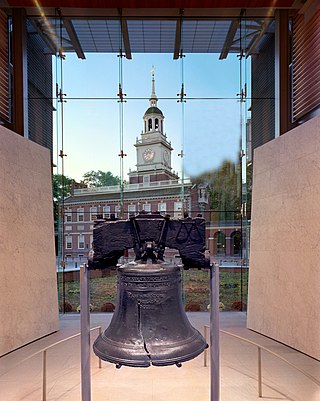
Philadelphia, commonly referred to as Philly, is the most populous city in the U.S. state of Pennsylvania and the sixth-most populous city in the nation, with a population of 1,603,797 in the 2020 census. The city is the urban core of the larger Delaware Valley, also known as the Philadelphia metropolitan area, the nation's seventh-largest and one of the world's largest metropolitan regions with 6.245 million residents in its metropolitan statistical area and 7.366 million residents in its combined statistical area.

MOVE, originally the Christian Movement for Life, is a communal organization that advocates for nature laws and natural living, founded in 1972 in Philadelphia, Pennsylvania, United States, by John Africa. The name, styled in all capital letters, is not an acronym. MOVE lived in a communal setting in West Philadelphia, abiding by philosophies of anarcho-primitivism. The group combined revolutionary ideology, similar to that of the Black Panthers, with work for animal rights.

The city of Philadelphia was founded in 1682 by William Penn in the English Crown Province of Pennsylvania between the Delaware and Schuylkill rivers. Before then, the area was inhabited by the Lenape people. Philadelphia quickly grew into an important colonial city and during the American Revolution was the site of the First and Second Continental Congresses. After the Revolution the city was chosen to be the temporary capital of the United States. At the beginning of the 19th century, the federal and state governments left Philadelphia, but the city remained the cultural and financial center of the country. Philadelphia became one of the first U.S. industrial centers and the city contained a variety of industries, the largest being textiles.
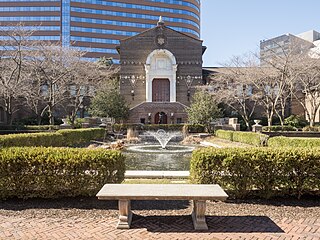
Penn Museum, formerly known as The University of Pennsylvania Museum of Archaeology and Anthropology, is an archaeology and anthropology museum at the University of Pennsylvania. It is located on Penn's campus in the University City neighborhood of Philadelphia, at the intersection of 33rd and South Streets. It also is close enough for Drexel University students to walk or take SEPTA transportation services. Housing over 1.3 million artifacts, the museum features one of the most comprehensive collections of Middle and Near-Eastern art in the world.

Francis Lazarro Rizzo was an American police officer and politician. He served as commissioner of the Philadelphia Police Department (PPD) from 1967 to 1971 and mayor of Philadelphia from 1972 to 1980. He was a member of the Democratic Party throughout the entirety of his career in public office. He switched to the Republican Party in 1986 and campaigned as a Republican for the final five years of his life.

John Africa, born Vincent Leaphart, was the founder of MOVE, a Philadelphia-based, predominantly black organization active from the early 1970s and still active. He and his followers were killed at a residential home, which served as the headquarters of MOVE, in a fire after the Philadelphia Police Department bombed the house with C4-explosive, and deliberately let the fire rage until it was out of control following a standoff and firefight between MOVE and police.
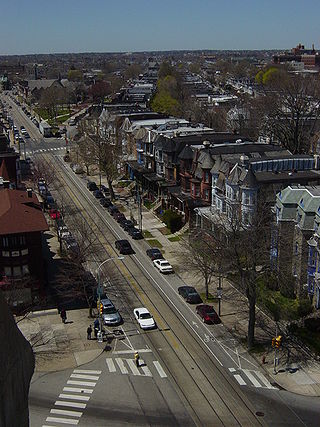
West Philadelphia, nicknamed West Philly, is a section of the city of Philadelphia. Although there are no officially defined boundaries, it is generally considered to reach from the western shore of the Schuylkill River, to City Avenue to the northwest, Cobbs Creek to the southwest, and the SEPTA Media/Wawa Line to the south. An alternate definition includes all city land west of the Schuylkill; this would also include Southwest Philadelphia and its neighborhoods. The eastern side of West Philadelphia is also known as University City.

Overbrook Park is a neighborhood in the West Philadelphia section of Philadelphia, Pennsylvania, United States. It was founded in the 1940s on the site of a former farm known as Supio's farm, offering new housing for returning GIs and their families. Overbrook Park is a largely middle-class African-American and historically Jewish-American neighborhood.
The May 19th Communist Organization was a US-based far-left revolutionary group formed by members of the Weather Underground Organization. The group was originally known as the New York chapter of the Prairie Fire Organizing Committee (PFOC), an organization devoted to promoting the causes of the Weather Underground legally, as part of the Prairie Fire Manifesto's change in Weather Underground Organization strategy, which demanded both aboveground mass movements and clandestine organizations. The role of the clandestine organization would be to build the "consciousness of action" and prepare the way for the development of a people's militia. Concurrently, the role of the mass movement, the above-ground Prairie Fire Collective, would include the support for and the encouragement of armed action. Such an alliance would, according to Weather, "help create the 'sea' for the guerrillas to swim in." The M19CO name was derived from the birthdays of Ho Chi Minh and Malcolm X. The May 19 Communist Organization was active from 1978 to 1985. M19CO was a combination of the Black Liberation Army and the Weather Underground. It also included members of the Black Panthers, White Panthers, and the Republic of New Afrika (RNA).
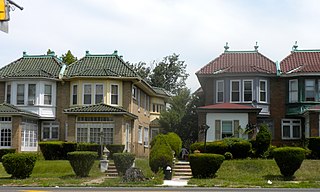
Cobbs Creek is a neighborhood located in the West Philadelphia section of Philadelphia, Pennsylvania, United States, named for the creek which forms part of Philadelphia's western border. Cobbs Creek is generally bounded by Market Street to the north, Baltimore Avenue to the south, 52nd Street to the east, and the border of Upper Darby along Cobbs Creek to the West.
Paul Washington was an Episcopal priest and community activist in Philadelphia.

Woodrow Wilson Goode Sr. is a former Mayor of Philadelphia and the first African American to hold that office. He served from 1984 to 1992, a period which included the controversial MOVE police action and house bombing in 1985. Goode was also a community activist, chair of the state Public Utility Commission, and managing director for the City of Philadelphia.
Kevin M. Tucker was an American police commissioner of the Philadelphia Police Department from 1986 to 1988. Tucker was appointed police commissioner by Philadelphia Mayor Wilson Goode in 1986 in the aftermath of the 1985 MOVE bombing and a separate corruption scandal. Tucker is credited with implementing police department reforms, including the reintroduction of foot patrols, which are still used as of 2012. He stepped down as commissioner in 1988 for a position in the private sector.
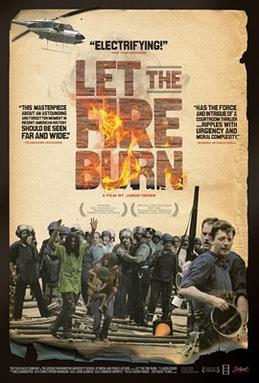
Let the Fire Burn is a 2013 documentary film about the events leading up to and surrounding a 1985 stand-off between the black liberation group MOVE and the Philadelphia Police Department. The film is directed and produced by Jason Osder and was released by Zeitgeist Films in October 2013.

The history of African Americans or Black Philadelphians in the city of Philadelphia, Pennsylvania has been documented in various sources. People of African descent are currently the largest ethnic group in Philadelphia. Estimates in 2010 by the U.S. Census Bureau documented the total number of people living in Philadelphia who identified as Black or African American at 644,287, or 42.2% of the city's total population.

David Fair is an American activist who has been a leader in the labor, LGBT, AIDS, homeless and child advocacy movements in Philadelphia, PA since the 1970s. He has founded or co-founded several advocacy and service organizations, including the Philadelphia Lesbian and Gay Task Force (1977), the Philadelphia Gay Cultural Festival (1978), Lavender Health (1979), the Philadelphia/Delaware Valley Union of the Homeless (1985), Philly Homes 4 Youth (2017), and the Philadelphia Coalition on Opioids and Children (2018), and led the creation of numerous local government health and human service initiatives, including the AIDS Activities Coordinating Office for the Philadelphia Department of Public Health (1987) and the Division of Community-Based Prevention Services (2001), the Parenting Collaborative (2003), and the Quality Parenting Initiative (2014) for the Philadelphia Department of Human Services.
Gregore J. Sambor was an American Police Commissioner of the Philadelphia Police Department from 1984 to 1985. He had a major role in the 1985 bombing of MOVE, in which six adults and five children died after he told firefighters to stand down and "let the fire burn". Sambor argued the group was a terrorist organization.
Janet Monge is an American physical anthropologist who was the keeper and curator of the physical anthropology section at the Penn Museum, the associate director and Manager of the Penn Museum Casting Program, and Adjunct Associate Professor at the University of Pennsylvania. Philadelphia Magazine named Monge "Best Museum Curator" in 2014. Monge's work covers nearly the entire spectrum of biological anthropology from paleoanthropology to forensic anthropology. Her research interests include human evolution, human skeletal biology, bioarchaeology, and life-history/paleodemography. Monge contributed to the analysis of the burnt remains of the 1985 MOVE bombing victims, and drew criticism that she had used remains from the bombing without the family's knowledge or consent. Monge had left her position at Penn by December 2023.

On October 26, 2020, Walter Wallace Jr., a 27-year-old African-American man, was fatally shot by Philadelphia police officers Sean Matarazzo and Thomas Munz at 6100 Locust Street in the Cobbs Creek section of Philadelphia, Pennsylvania. The two officers arrived in the area to respond to a domestic dispute. When they arrived, Wallace walked out of his house carrying a knife. The two officers backed away while telling him to drop the knife shortly before they each fired several rounds at Wallace, hitting him in the shoulder and chest. He later died from his wounds in the hospital. Wallace's family stated that Wallace was having a mental health crisis.
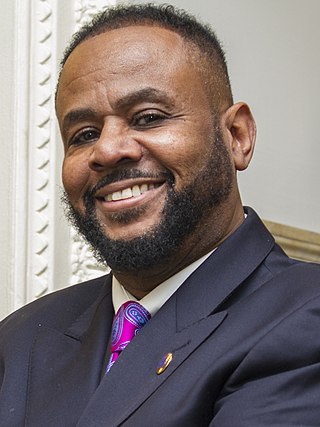
Curtis J. Jones Jr. is an American politician and a Democratic member of the Philadelphia City Council. In 2007, he was elected to represent the 4th District, which covers parts of North, Northwest, and West Philadelphia. He has served as Majority Leader (2012–2016) and Majority Whip since 2020.
















